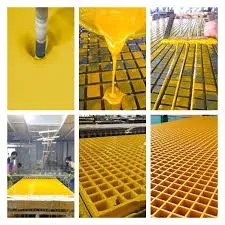
-
 Afrikaans
Afrikaans -
 Albanian
Albanian -
 Amharic
Amharic -
 Arabic
Arabic -
 Armenian
Armenian -
 Azerbaijani
Azerbaijani -
 Basque
Basque -
 Belarusian
Belarusian -
 Bengali
Bengali -
 Bosnian
Bosnian -
 Bulgarian
Bulgarian -
 Catalan
Catalan -
 Cebuano
Cebuano -
 China
China -
 China (Taiwan)
China (Taiwan) -
 Corsican
Corsican -
 Croatian
Croatian -
 Czech
Czech -
 Danish
Danish -
 Dutch
Dutch -
 English
English -
 Esperanto
Esperanto -
 Estonian
Estonian -
 Finnish
Finnish -
 French
French -
 Frisian
Frisian -
 Galician
Galician -
 Georgian
Georgian -
 German
German -
 Greek
Greek -
 Gujarati
Gujarati -
 Haitian Creole
Haitian Creole -
 hausa
hausa -
 hawaiian
hawaiian -
 Hebrew
Hebrew -
 Hindi
Hindi -
 Miao
Miao -
 Hungarian
Hungarian -
 Icelandic
Icelandic -
 igbo
igbo -
 Indonesian
Indonesian -
 irish
irish -
 Italian
Italian -
 Japanese
Japanese -
 Javanese
Javanese -
 Kannada
Kannada -
 kazakh
kazakh -
 Khmer
Khmer -
 Rwandese
Rwandese -
 Korean
Korean -
 Kurdish
Kurdish -
 Kyrgyz
Kyrgyz -
 Lao
Lao -
 Latin
Latin -
 Latvian
Latvian -
 Lithuanian
Lithuanian -
 Luxembourgish
Luxembourgish -
 Macedonian
Macedonian -
 Malgashi
Malgashi -
 Malay
Malay -
 Malayalam
Malayalam -
 Maltese
Maltese -
 Maori
Maori -
 Marathi
Marathi -
 Mongolian
Mongolian -
 Myanmar
Myanmar -
 Nepali
Nepali -
 Norwegian
Norwegian -
 Norwegian
Norwegian -
 Occitan
Occitan -
 Pashto
Pashto -
 Persian
Persian -
 Polish
Polish -
 Portuguese
Portuguese -
 Punjabi
Punjabi -
 Romanian
Romanian -
 Russian
Russian -
 Samoan
Samoan -
 Scottish Gaelic
Scottish Gaelic -
 Serbian
Serbian -
 Sesotho
Sesotho -
 Shona
Shona -
 Sindhi
Sindhi -
 Sinhala
Sinhala -
 Slovak
Slovak -
 Slovenian
Slovenian -
 Somali
Somali -
 Spanish
Spanish -
 Sundanese
Sundanese -
 Swahili
Swahili -
 Swedish
Swedish -
 Tagalog
Tagalog -
 Tajik
Tajik -
 Tamil
Tamil -
 Tatar
Tatar -
 Telugu
Telugu -
 Thai
Thai -
 Turkish
Turkish -
 Turkmen
Turkmen -
 Ukrainian
Ukrainian -
 Urdu
Urdu -
 Uighur
Uighur -
 Uzbek
Uzbek -
 Vietnamese
Vietnamese -
 Welsh
Welsh -
 Bantu
Bantu -
 Yiddish
Yiddish -
 Yoruba
Yoruba -
 Zulu
Zulu
Jan . 10, 2025 08:52
Back to list
frp scrubber
Fiber Reinforced Plastic (FRP) scrubbers have become essential components in controlling air pollution across various industrial sectors. Their widespread use comes from the unique combination of durability, resistance, and customization flexibility that they offer. Additionally, as industries are under increasing pressure to adhere to strict environmental regulations, the demand for effective solutions such as FRP scrubbers continues to rise.
The trustworthiness of FRP scrubbers is also evident in the rigorous testing and quality assurance processes they undergo. Many manufacturers implement stringent controls to ensure each scrubber meets international safety and environmental standards before it reaches the customer. This commitment to quality further solidifies the FRP scrubber's position as a reliable and trustworthy solution for air pollution control. In addition to their functional benefits, FRP scrubbers offer substantial economic advantages. The initial investment may be higher than some traditional materials, but the reduced maintenance costs, extended service life, and improved performance efficiency often yield a favorable return on investment. Businesses looking to adopt FRP scrubbers should consider these long-term financial benefits when making a decision. Finally, FRP scrubbers remain at the forefront of industrial innovation, with ongoing research and development continually enhancing their capabilities. Innovations may include improved chemical resistance, higher operational efficiency, and integration with digital monitoring systems to provide real-time performance data. This continuous improvement ensures that FRP scrubbers not only meet current industry standards but are also equipped to handle future regulatory requirements. Given the increasing emphasis on environmental accountability and sustainable practices, FRP scrubbers are more relevant than ever. Their combination of expert engineering, authoritative performance, and credible results makes them a preferred choice for industries aiming to minimize their environmental footprint while maintaining operational efficiency. For companies committed to advancing their pollution control strategies, investing in FRP scrubber technology is both a practical and forward-thinking decision.


The trustworthiness of FRP scrubbers is also evident in the rigorous testing and quality assurance processes they undergo. Many manufacturers implement stringent controls to ensure each scrubber meets international safety and environmental standards before it reaches the customer. This commitment to quality further solidifies the FRP scrubber's position as a reliable and trustworthy solution for air pollution control. In addition to their functional benefits, FRP scrubbers offer substantial economic advantages. The initial investment may be higher than some traditional materials, but the reduced maintenance costs, extended service life, and improved performance efficiency often yield a favorable return on investment. Businesses looking to adopt FRP scrubbers should consider these long-term financial benefits when making a decision. Finally, FRP scrubbers remain at the forefront of industrial innovation, with ongoing research and development continually enhancing their capabilities. Innovations may include improved chemical resistance, higher operational efficiency, and integration with digital monitoring systems to provide real-time performance data. This continuous improvement ensures that FRP scrubbers not only meet current industry standards but are also equipped to handle future regulatory requirements. Given the increasing emphasis on environmental accountability and sustainable practices, FRP scrubbers are more relevant than ever. Their combination of expert engineering, authoritative performance, and credible results makes them a preferred choice for industries aiming to minimize their environmental footprint while maintaining operational efficiency. For companies committed to advancing their pollution control strategies, investing in FRP scrubber technology is both a practical and forward-thinking decision.
Next:
Related Products









